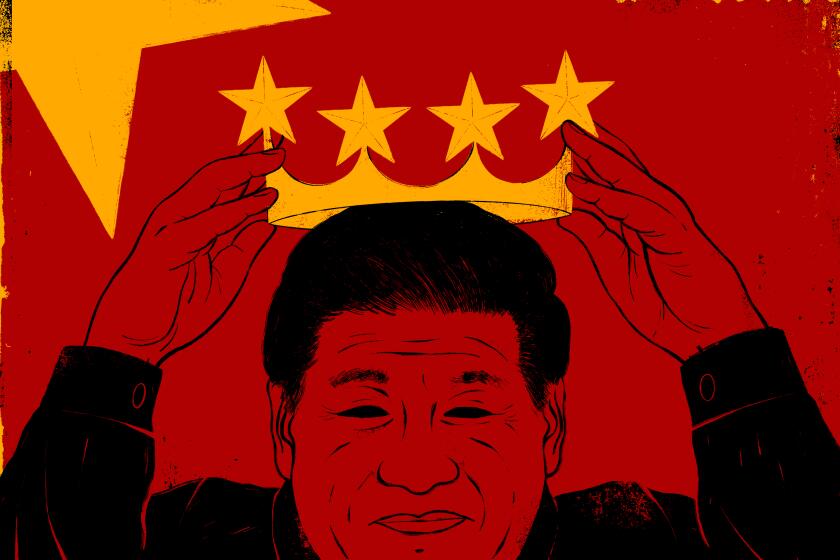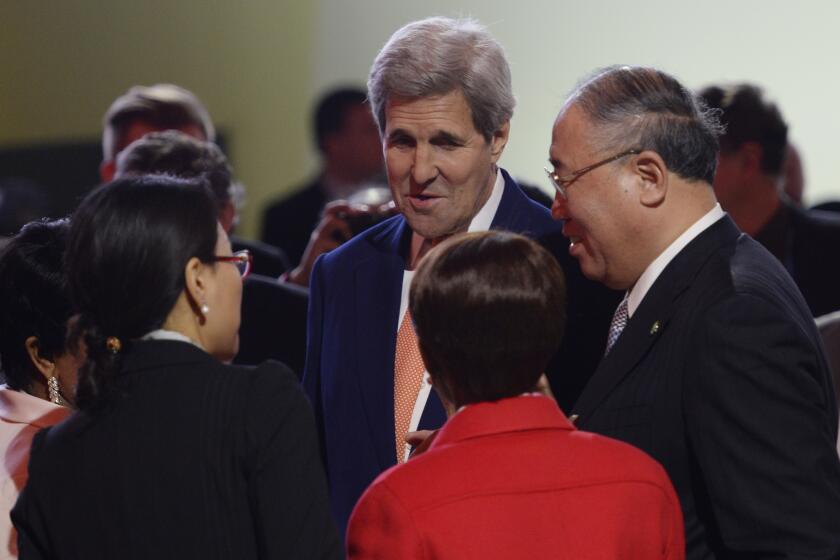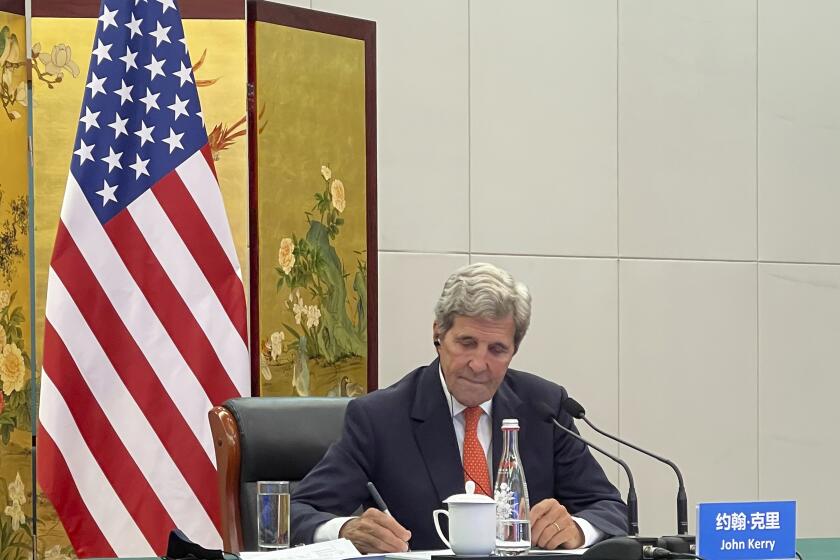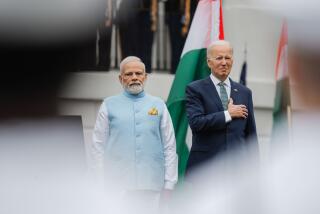China promotes coal in a setback for efforts to cut climate-changing emissions
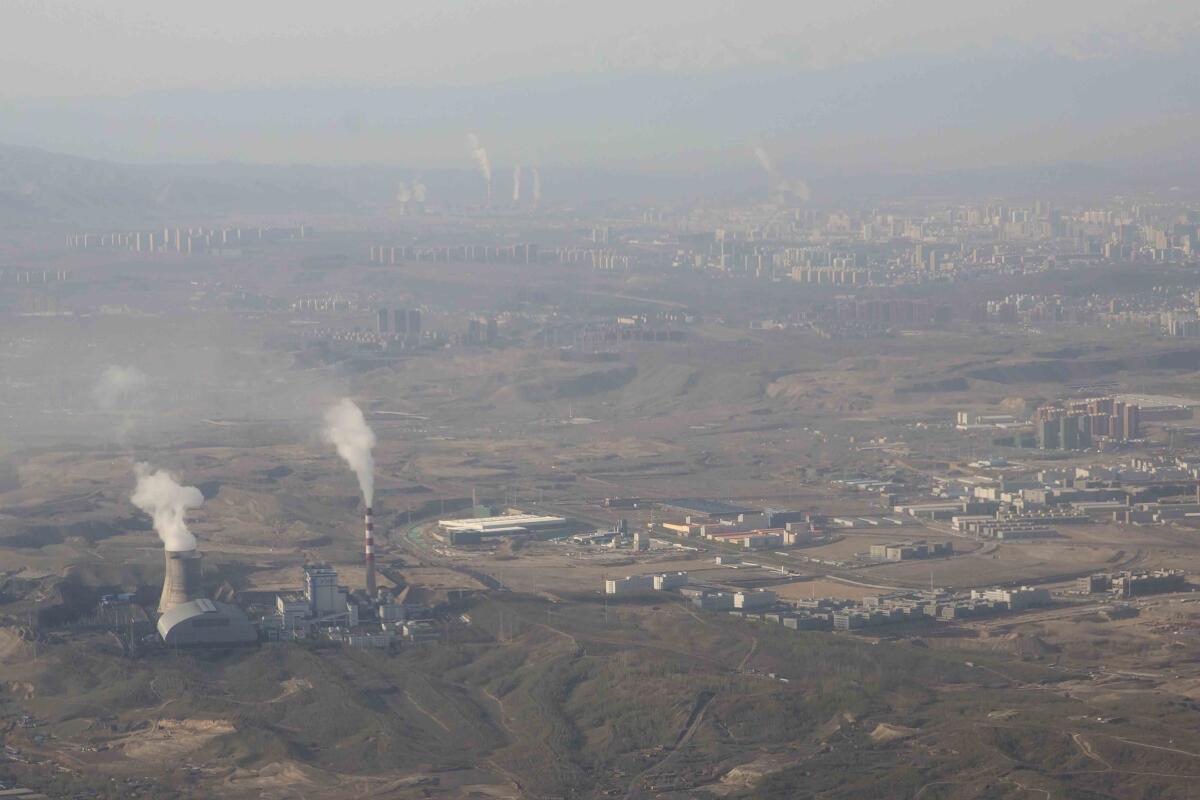
- Share via
BEIJING — China is promoting coal-fired power as the ruling Communist Party tries to revive a sluggish economy, prompting warnings that Beijing is setting back efforts to cut climate-changing carbon emissions from their biggest global source.
Official plans call for boosting coal production capacity by 300 million tons this year, according to news reports. That is equal to 7% of last year’s output of 4.1 billion tons, which was an increase of 5.7% over 2020.
China is one of the biggest investors in wind and solar energy, but jittery leaders called for more coal-fired power after economic growth plunged last year and shortages caused blackouts and factory shutdowns. Russia’s attack on Ukraine added to anxiety that foreign oil and coal supplies might be disrupted.
“This mentality of ensuring energy security has become dominant, trumping carbon neutrality,” said Li Shuo, a senior global policy advisor for Greenpeace. “We are moving into a relatively unfavorable time period for climate action in China.”
Chinese officials face political pressure to ensure stability as President Xi Jinping prepares to try to break with recent tradition and award himself a third five-year term as ruling party leader in the autumn.
Coal is important for “energy security,” Cabinet officials said at a Wednesday meeting that approved plans to expand production capacity, according to Caixin, a business news magazine.
China’s paramount leader, Xi Jinping, sees himself as a savior, anointed to steer the Communist Party and China away from corruption and foreign influence, into a ‘new era’ of prosperity, power and political devotion. Whether his vision matches reality is another question.
The ruling party also is building power plants to inject money into the economy and revive economic growth.
Governments around the world have pledged to try to limit warming of the atmosphere to 2 degrees Celsius (3.6 degrees Fahrenheit) above the level of pre-industrial times. Leaders say what they really want is a limit of 1.5 degrees Celsius (2.7 degrees Fahrenheit).
Scientists say even if the world hits the 2-degree goal in the 2015 Paris climate pact and the 2021 Glasgow follow-up agreement, that still will lead to higher seas, stronger storms, extinctions of plants and animals and more people dying from heat, smog and infectious diseases.
China is the top producer and consumer of coal. Global trends hinge on what Beijing does.
The rest of the world may suffer the consequences if the U.S. and China don’t work together on reducing greenhouse gas emissions.
The Communist Party has rejected binding emissions commitments, citing China’s economic development needs. Beijing has avoided joining governments that promised to phase out use of coal-fired power.
In a 2020 speech to the United Nations, Xi said China’s carbon emissions would peak by 2030, but he announced no target for the amount. Xi said China aims for carbon neutrality, or removing as much carbon dioxide from the atmosphere as is emitted by industry and households, by planting trees and other tactics by 2060.
China accounts for 26.1% of global emissions, more than double the U.S. share of 12.8%, according to the World Resources Institute. Rhodium Group, a research firm, says China emits more than all developed economies combined.
Per person, China’s 1.4 billion people on average emit the equivalent of 8.4 tons of carbon dioxide annually, according to WRI. That is less than half the U.S. average of 17.7 tons per person but more than the European Union’s 7.5 tons.
Toward a more sustainable California
Get Boiling Point, our newsletter exploring climate change, energy and the environment, and become part of the conversation — and the solution.
You may occasionally receive promotional content from the Los Angeles Times.
China has abundant supplies of coal and produced more than 90% of the 4.4 billion tons it burned last year. More than half of its oil and gas is imported, which leaders see as a strategic risk.
China’s goal of carbon neutrality by 2060 appears to be on track, but using more coal “could jeopardize this, or at least slow it down and make it more costly,” Clare Perry of the Environmental Investigations Agency said in an email.
Promoting coal will make emissions “much higher than they need to be” by the 2030 peak year, said Perry.
“This move runs entirely counter to the science,” she said.
U.S. envoy John Kerry tells Vice Premier Han Zheng there is ‘no way’ to solve the climate crisis without China’s ‘full engagement and commitment.’
Beijing has spent tens of billions of dollars on building solar and wind farms to reduce reliance on imported oil and gas and clean up its smog-choked cities. China accounted for about half of global investment in wind and solar in 2020.
Still, coal is expected to supply 60% of its power in the near future.
Beijing is cutting millions of jobs to shrink its bloated, state-owned coal mining industry, but output and consumption still are rising.
Authorities say they are shrinking carbon emissions per unit of economic output. The government reported a reduction of 3.8% last year, better than 2020′s 1% but down from a 5.1% cut in 2017.
Scientists say Europe last summer saw temperatures 1.8 degrees Fahrenheit higher than the average for the previous three decades.
Last year’s total energy use increased 5.2% over 2020 after a revival of global demand for Chinese exports propelled a manufacturing boom, according to the National Bureau of Statistics.
Stimulus spending also might raise carbon output if it pays for building more bridges, train stations and other public works. That would encourage carbon-intensive steel and cement production.
China’s coal-fired power plants operate at about half their capacity on average, but building more creates jobs and economic activity, said Greenpeace’s Li. He said even if the power isn’t needed now, local leaders face pressure to make them pay for themselves.
“That locks China into a more high-carbon path,” Li said. “It’s very difficult to fix.”
More to Read
Sign up for Essential California
The most important California stories and recommendations in your inbox every morning.
You may occasionally receive promotional content from the Los Angeles Times.
